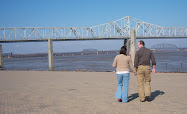1 Now even the first covenant had regulations of divine worship and the earthly sanctuary.
2 For there was a tabernacle prepared, the outer one, in which were the lampstand and the table and the sacred bread; this is called the holy place.
3 Behind the second veil there was a tabernacle which is called the Holy of Holies,
4 having a golden altar of incense and the ark of the covenant covered on all sides with gold, in which was a golden jar holding the manna, and Aaron’s rod which budded, and the tables of the covenant;
5 and above it were the cherubim of glory overshadowing the mercy seat; but of these things we cannot now speak in detail.
6 Now when these things have been so prepared, the priests are continually entering the outer tabernacle performing the divine worship,
7 but into the second, only the high priest enters once a year, not without taking blood, which he offers for himself and for the sins of the people committed in ignorance.
8 The Holy Spirit is signifying this, that the way into the holy place has not yet been disclosed while the outer tabernacle is still standing,
9 which is a symbol for the present time. Accordingly both gifts and sacrifices are offered which cannot make the worshiper perfect in conscience,
10 since they relate only to food and drink and various washings, regulations for the body imposed until a time of reformation.
“Now even the first covenant had regulations of divine worship and the earthly sanctuary. For there was a tabernacle prepared, the outer one, in which were the lampstand and the table and the sacred bread; this is called the holy place.” This is where the priest would enter constantly to offer sacrifices and gifts to the Lord for their sins. “Behind the second veil there was a tabernacle which is called the Holy of Holies, a golden altar of incense and the ark of the covenant covered on all sides with gold, in which was a golden jar holding the manna, and Aaron’s rod which budded, and the tables of the covenant; and above it were the cherubim of glory overshadowing the mercy seat”. This is also referred to as the
“Now when these things have been so prepared, the priests are continually entering the outer tabernacle performing the divine worship”. This was something that had to be done over and over and over, and the preacher wants us to understand that. The “priest are continually entering”. Their work is never finished. Now many priest did the work of offerings in the outer tabernacle, “but into the second, only the high priest enters once a year, not without taking blood, which he offers for himself and for the sins of the people committed in ignorance”. The Law prescribed offerings that had to be had for sin, but they like all men have many sins they didn’t even know about which they would not have made offerings for. Thus, God provided for them a way to deal with those sin done in ignorance. Once a year, the high priest of the people would enter into the Holy of Holies to make an offering for sins. He would go in with blood, for there is no forgiveness without blood, and offer it as a sacrifice for the sins of the people. But not only for the people, but also for himself, thus he is a weak mediator between God and man because he is as sinful and needs a sacrifice as much as the rest of us.
“The Holy Spirit is signifying this, that the way into the holy place has not yet been disclosed while the outer tabernacle is still standing”. While the outer tabernacle still stands there is a blockade between us and God. There remains a separation between us because He cannot allow sinfulness to be in His presence. Thus, while the outer tabernacle still stands we cannot be in the presence of God. This the outer tabernacle ““is a symbol for the present time. Accordingly both gifts and sacrifices are offered which cannot make the worshiper perfect in conscience, since they relate only to food and drink and various washings, regulations for the body imposed until a time of reformation.” Everything that the priest does, even with in being in accordance with God’s Word and will, cannot make the worshiper clear in conscience. There still remains a separation between God and the individual. The outer tabernacle must be torn down.
Because we know the end of the story, we can begin to see where the preacher is taking us. We know that that Holy of Holies is really just a type of the true tabernacle which is in heaven where the Father dwells. Thus, the outer tabernacle had to be removed and the veil torn down. All praise be to God that through Jesus’ death the veil was torn from top to bottom (Matthew 27:51) because the thing the veil foreshadowed was torn for our transgressions. “Therefore, brethren, since we have confidence to enter the holy place by the blood of Jesus, by a new and living way which He inaugurated for us through the veil, that is, His flesh” (Hebrews 10:20). Christ flesh was the veil and by it being destroyed in death, so now we enterance into the Holy of Holies in heaven before the throne of God, thus “let us draw near with a sincere heart in full assurance of faith” (10:22).


No comments:
Post a Comment